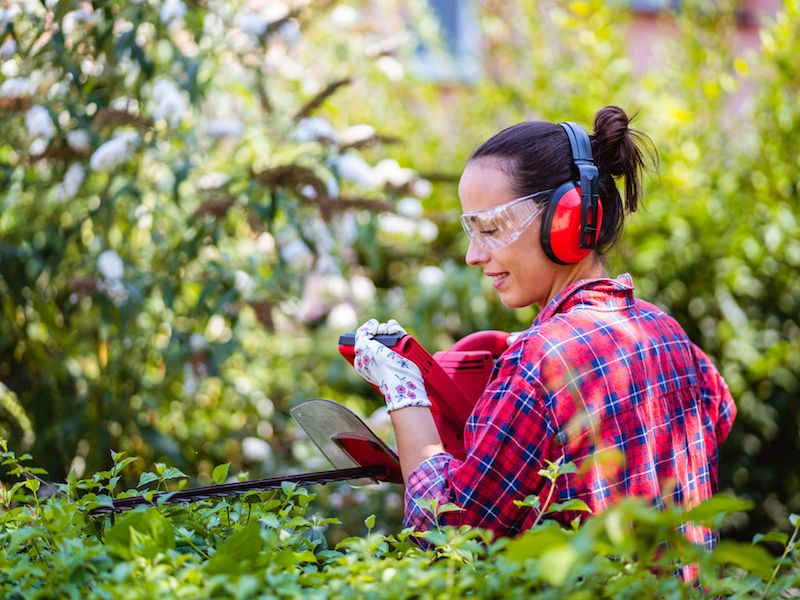
Eating right and safeguarding your hearing have some similarities. It’s difficult to know where to start even though it sounds like a good idea. If there aren’t any obvious noise risks and you don’t consider your daily environment to be very loud, this is especially true. But your ears and senses can be stressed by daily living, so doing these hearing protection tips can help safeguard your auditory acuity.
If you want to keep enjoying the sounds around you, you should do everything you can to impede down the impairment of your hearing.
Tip 1: Wearable Ear Protection
Using ear protection is the most practical and simple way to safeguard your hearing. This means that diminishing loud and harmful sound is a basic step you should take.
This means that when it’s called for most people will want to wear hearing protection. Hearing protection normally comes in two basic forms:
- Ear Plugs, which are placed in the ear canal.
- Ear Muffs, which are put over the ears.
Neither form of hearing protection is inherently better than the other. Each type has its benefits. What’s significant is that you get some hearing protection that you feel comfortable with.
Tip 2: Be Aware When Sound Gets Dangerous
But how can you be sure when to wear hearing protection? Noise that is painful is commonly regarded as harmful. But much lower levels of sound can damage your ears than you might realize. The sounds of traffic, for instance, are loud enough to begin damaging your hearing after just a couple of hours. Recognizing when sound becomes dangerous, then, is a vital step in protecting your hearing.
Generally sounds become dangerous at the following thresholds:
- Over 100 dB: Your hearing can be very rapidly damaged by this. Injury is done in about thirty seconds with anything above this threshold. Jet engines and rock concerts, for example, can damage your hearing in around thirty seconds.
- 95-100 dB: This is the typical level of your earbuds or the level of farm equipment. After about 15-20 minutes this level of sound becomes harmful.
- 85 decibels (dB): After around two hours this volume of sound is damaging.Your hairdryer or a busy city street are both circumstances where you will find this volume of sound.
Tip 3: Use Your Phone as a Sound Meter
We can take steps to minimize our exposure, now that we have an idea of what levels will be harmful. The trick is that, once you’re out in the real world, it can be challenging to measure what’s too loud and what isn’t.
That’s where your smartphone can become a handy little tool. There are dozens of apps for iPhone, Android, and everything in between that turn your device’s microphone into a sound meter.
Having a dynamic sound meter with you will help you evaluate everything you’re hearing in decibels, so you’ll have a much better concept of what harmful levels actually sound like in your daily life.
Tip 4: Keep Track of Your Volume Settings
A smartphone with earbuds is commonly the way people listen to music these days. Your hearing is put in danger with this combination. Over time, earbuds set to a sufficiently high level can cause considerable damage to your ears.
That’s why safeguarding your ears means keeping a focused eye on your volume management. In order to drown out sounds elsewhere, you should not raise the sound level. in order to make sure that volume doesn’t get too loud, we suggest using volume configurations or app settings.
If your hearing begins to wane, earbuds can become something of a negative feedback loop; in order to compensate for your declining hearing, you may find yourself continuously rising the volume of your earbuds, doing more damage to your ears in the process.
Tip 5: Have Your Hearing Examined
You might think of a hearing test as something you schedule when your hearing has already begun to decline. Without a baseline to compare results to, it’s not always easy to detect a problem in your ears.
Scheduling a hearing screening or exam is a good way to obtain data that can be used for both treatment and analytic purposes, making certain that all of your future hearing (and hearing protection) decisions have a little bit of added context and information.
Keep an Eye on Your Ears
In an ideal world, protecting your ears would be something you could do constantly without any difficulty. But there are always going to be difficulties. So safeguard your ears when you can, as often as possible. Also, get regular hearing exams. Put these suggestions into practice to improve your chances.
